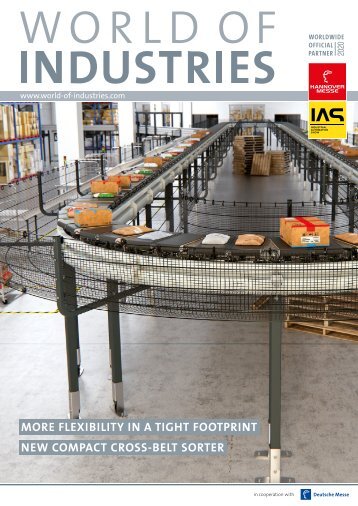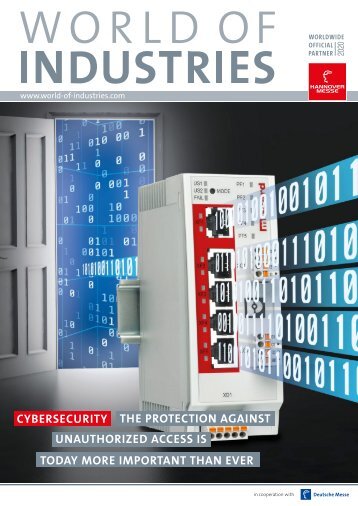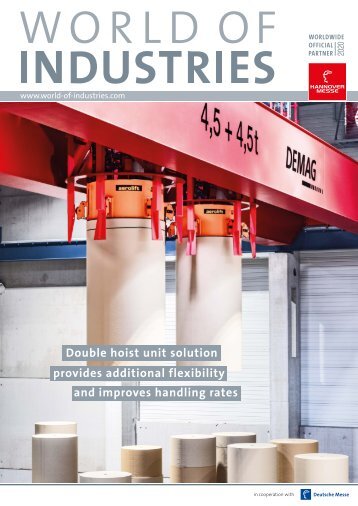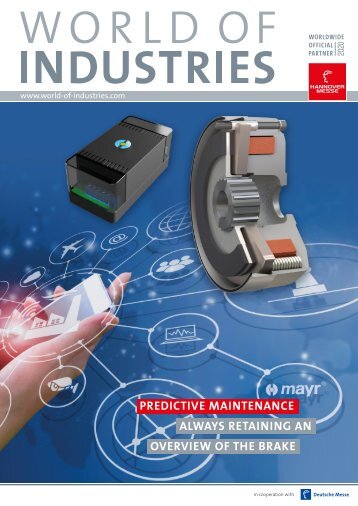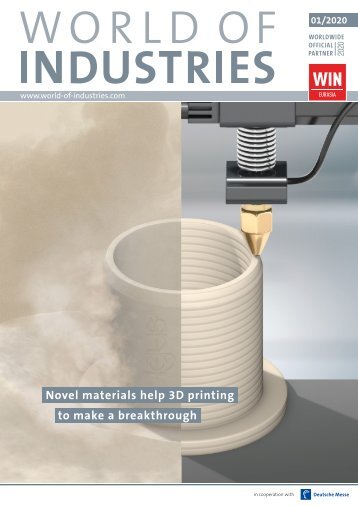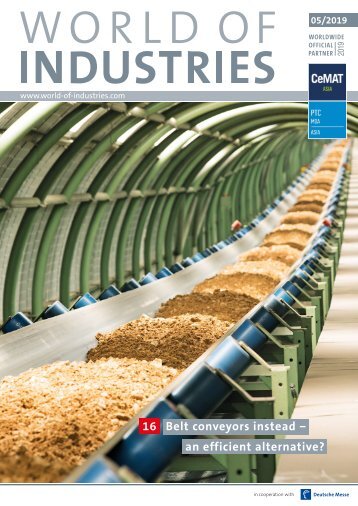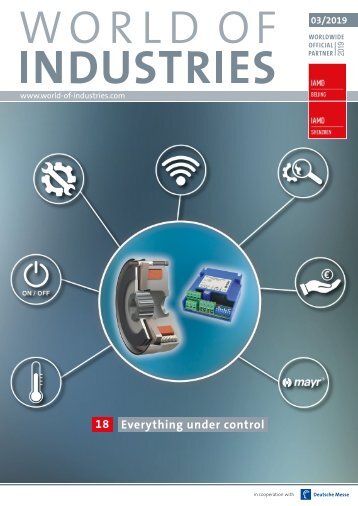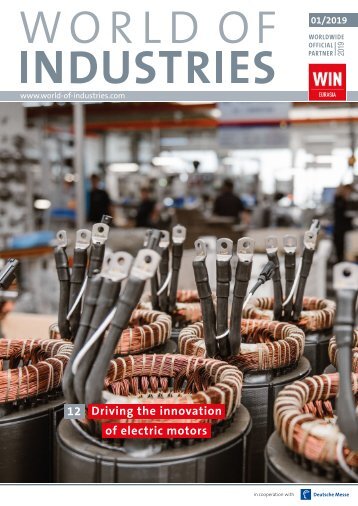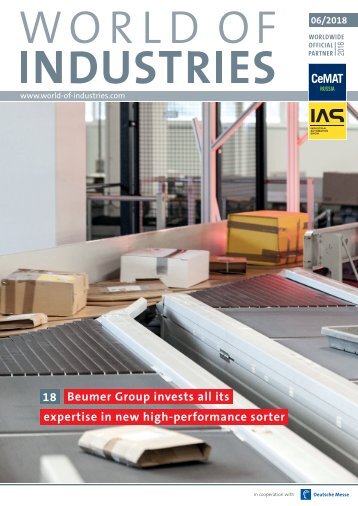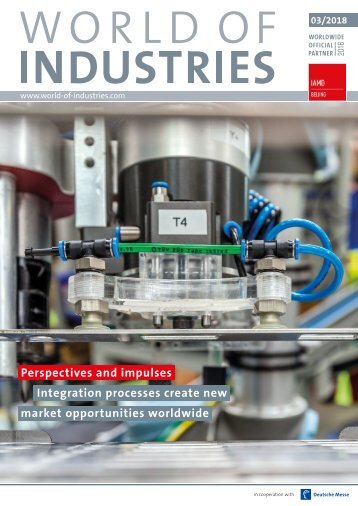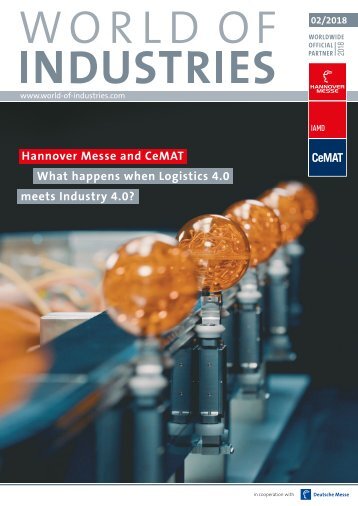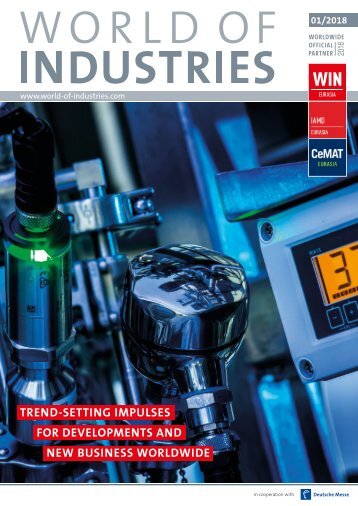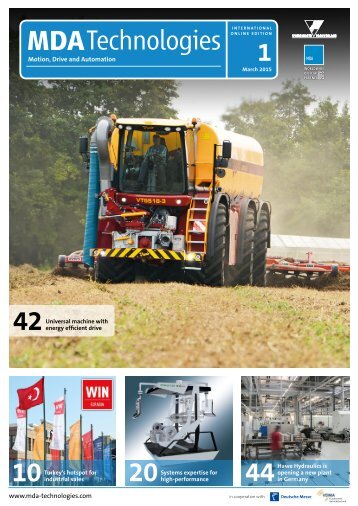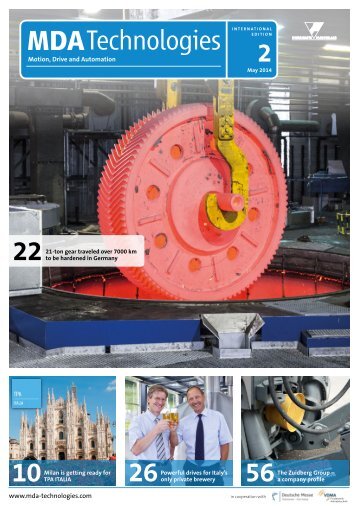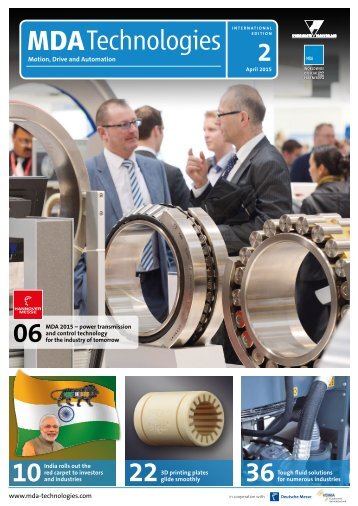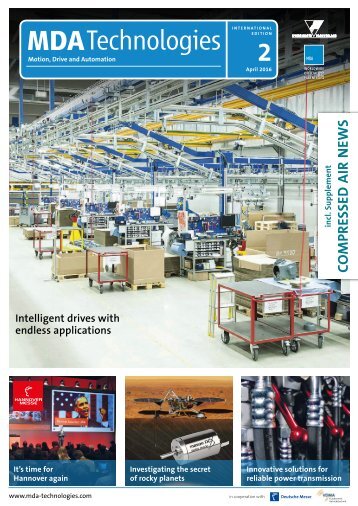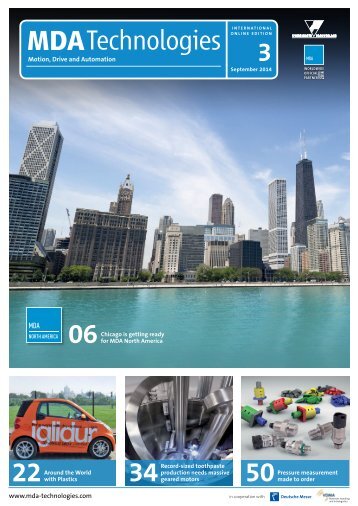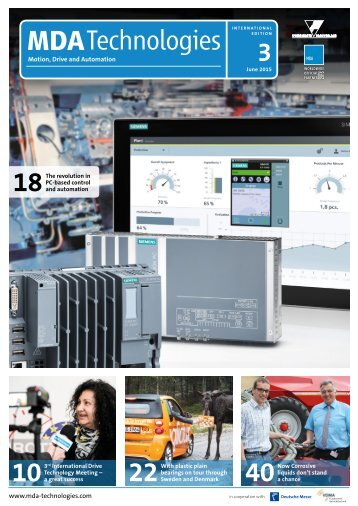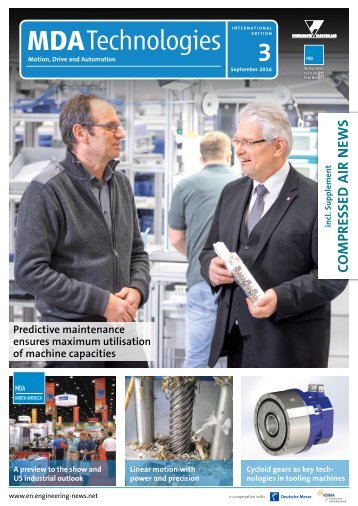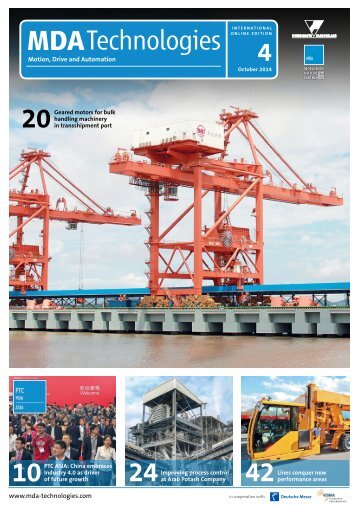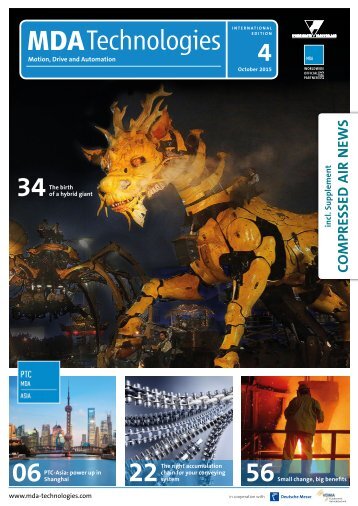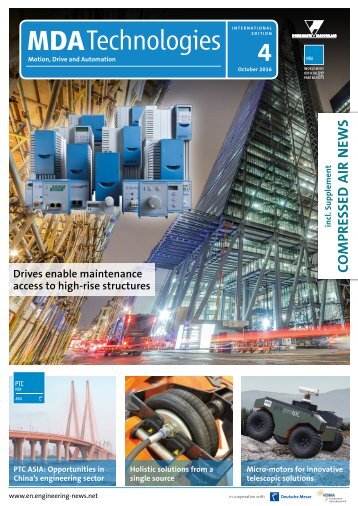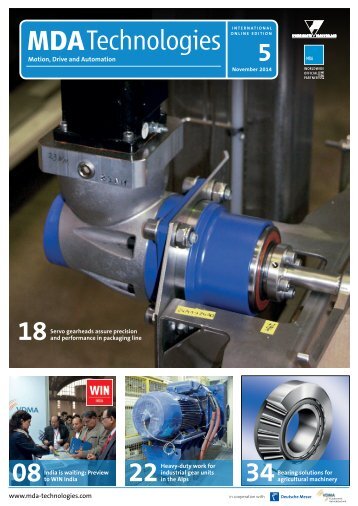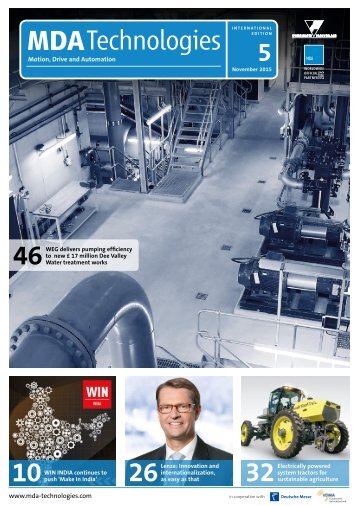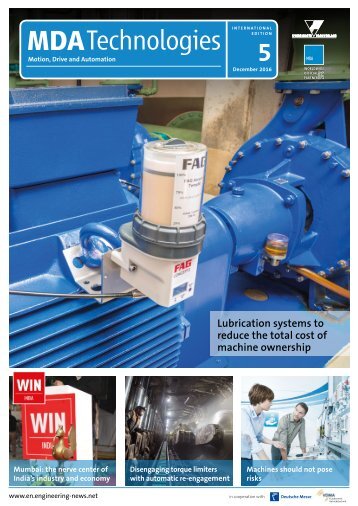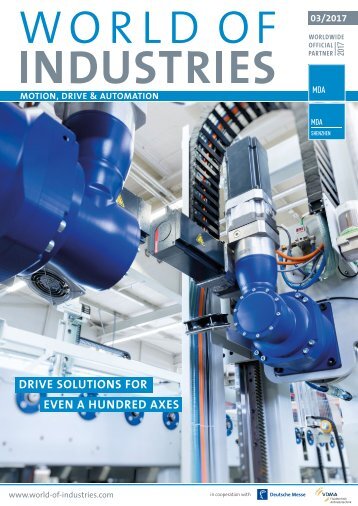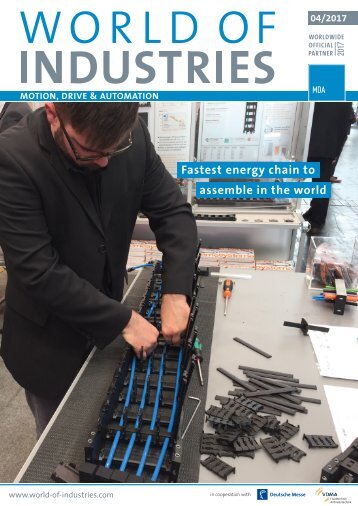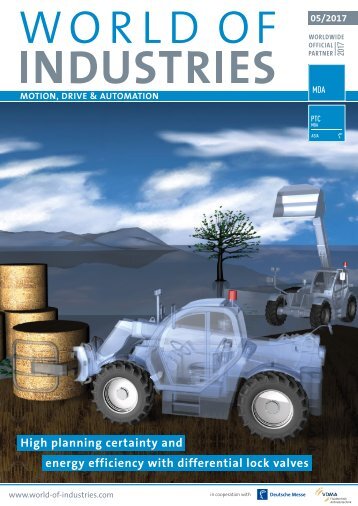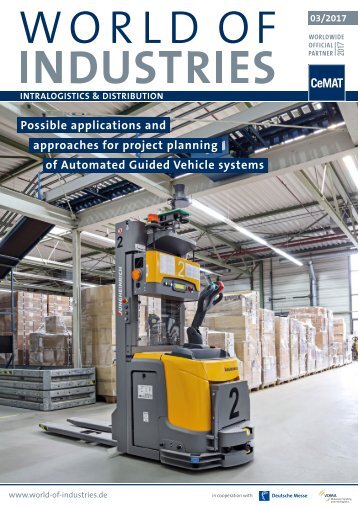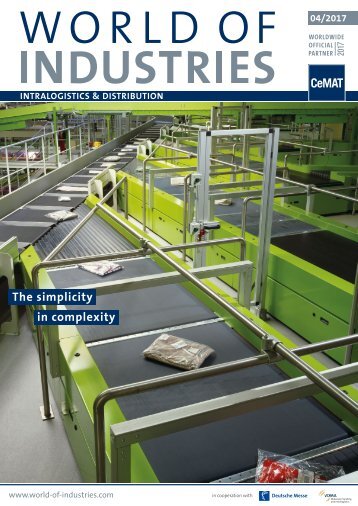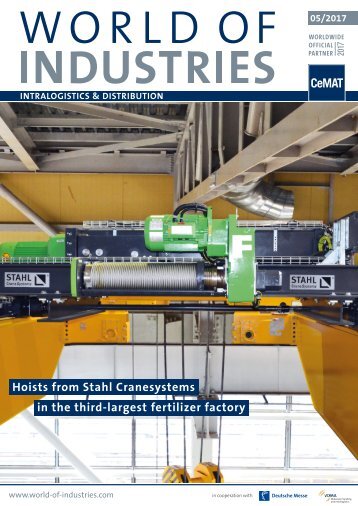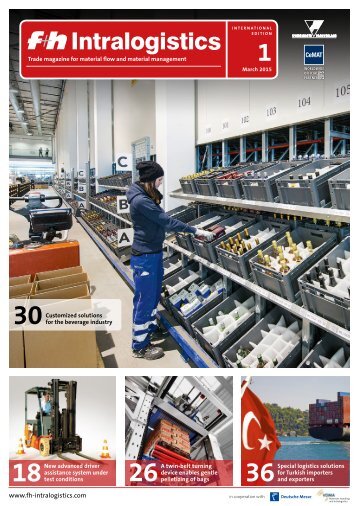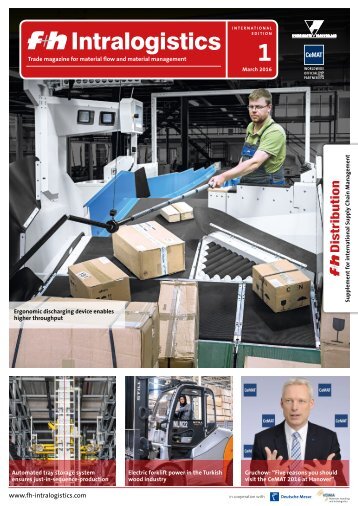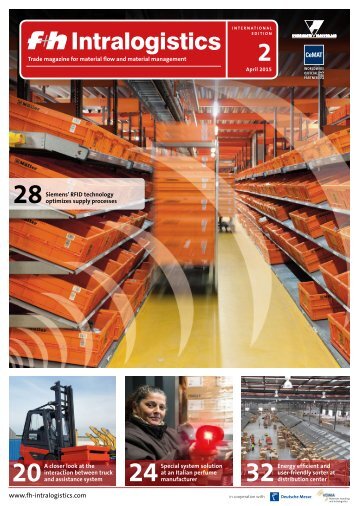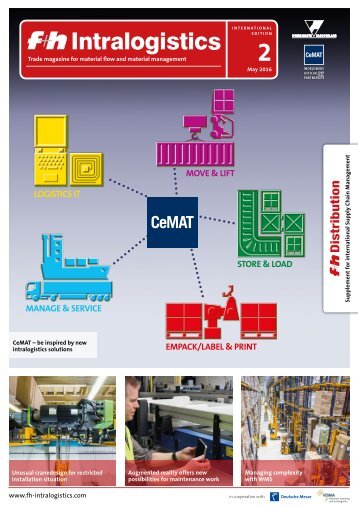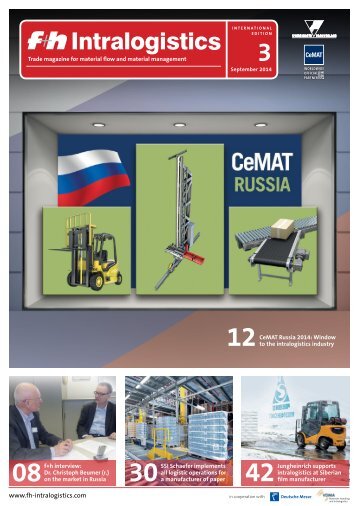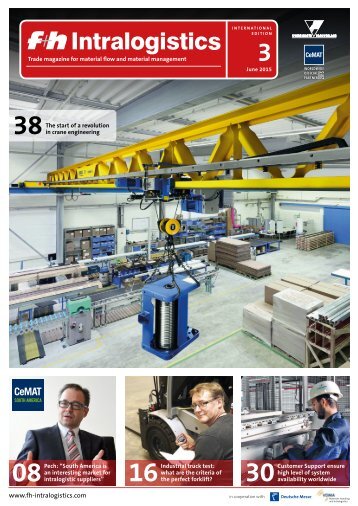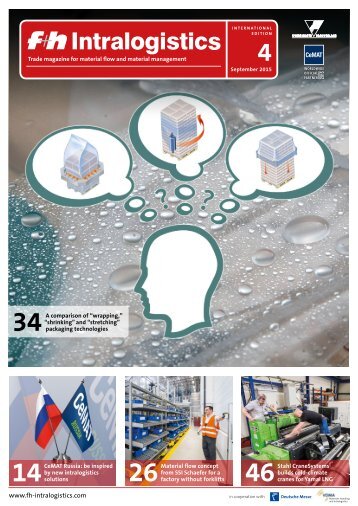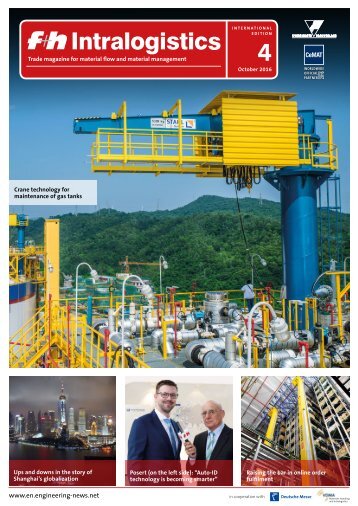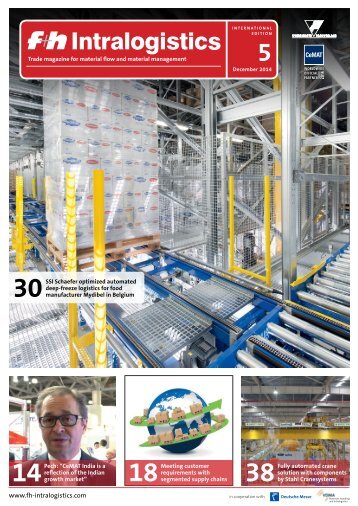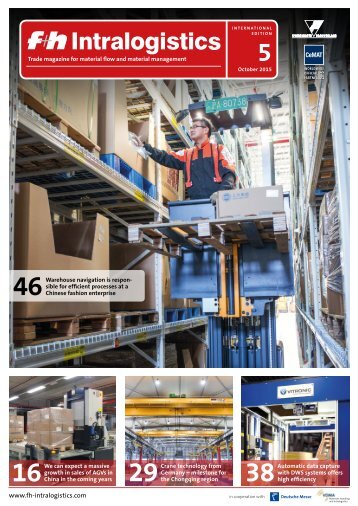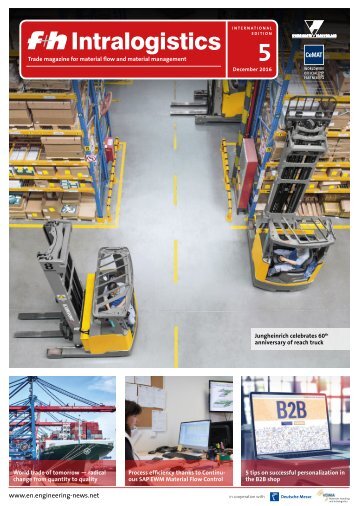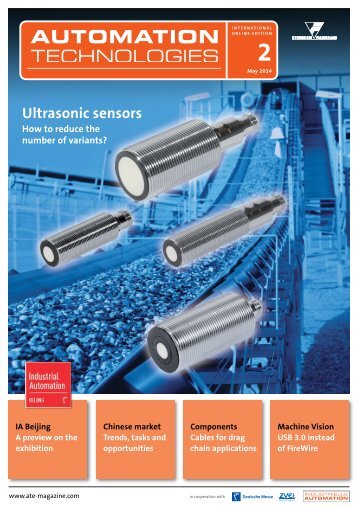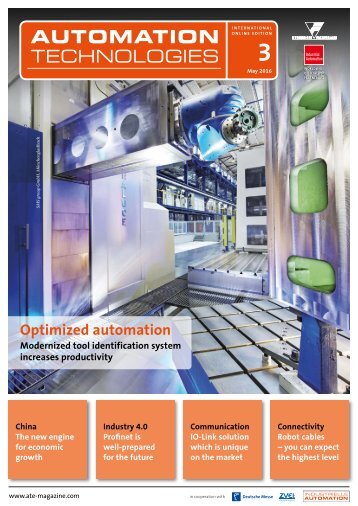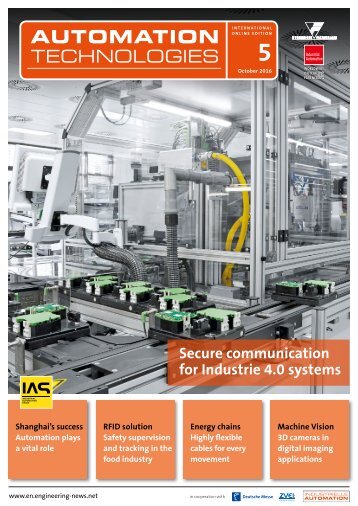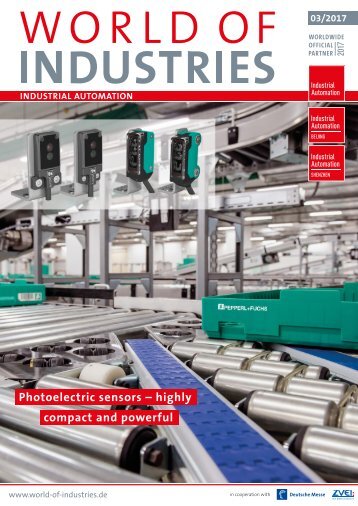WORLD OF INDUSTRIES 07/2018
- Text
- Industries
Thermal-based condition
Thermal-based condition monitoring solution for manufacturing companies AUTOMATION From process manufacturing applications to complex processes in utilities, it is important to guarantee functioning of all machinery. Condition-based maintenance systems help to maximize yield and quality, while decreasing unscheduled maintenance. A Taiwanese technology integrator has developed a condition monitoring solution for these companies, based on a thermal imaging sensor of Flir. Author: Wayne Sun, Sales Manager, Taiwan INSTR Sales PPM & Building, Flir Asia Today, the majority of production companies in the semiconductor industry conduct preventive maintenance of critical equipment based on statistically derived and predefined intervals. While these practices have had relative success in managing equipment availability and product yield, the cost, both in time and materials, remains high. Sometimes, interventions are performed on machines that do not need it. Other times, maintenance actions that are missed will result in machine failures, bad product quality, and unscheduled downtimes. “Maintenance is one of the key issues in modern semiconductor manufacturing,” says Wayne Sun, Sales Manager at Flir Systems Taiwan. “In the past, condition based maintenance and monitoring has been successfully adopted in utility companies and high end industries, where costs associated with equipment downtime are critical for the companies’ bottom lines. But increasingly so, the semiconductor and electronics manufacturing industries, like we have here inTaiwan, are starting to see the benefits of conditionbased maintenance and condition monitoring as well.” Detecting heat Condition monitoring is a way to identify features within the equipment that are indicative of the equipment health and of the potential degradation process. Heat build up inside a machine is such an indicator, next to vibration and power consumption for example. The ability to predict machine and system failures before they happen can reduce costs and increase availability significantly. ADE Technology Inc., based in New Taipei City, Taiwan, has been serving the industrial market for years with advanced video processing technology that seamlessly integrates with other industrial 42 WORLD OF INDUSTRIES 7/2018
IP camera Flir AX8 Thermal imaging camera T-Guard PoE Switch Do Alert 01 T-Guard makes use of Flir’s AX-8 camera and ADE’s AD-TG200 network video recorder. It allows managing temperature-driven alarms triggered by the AX8 sensor, in addition to other sensor information like IP cameras, voltage measurement and environment temperature measurement The AX8 combines a thermal and a visual camera in a small, affordable package 02 The thermal imaging camera can detect temperature raises due to insulation breakdown in an early stage devices and other data sensor types in order to build various applications in the field of the Internet of Things. “ADE knows the needs of utilities and manufacturing companies in terms of preventive maintenance very well,” says Wayne Sun. “Typical technologies that are used today for preventive monitoring are visual CCTV cameras and thermocouples. While both of these technologies have proven their use, they do have limitations in a preventive maintenance context.” Visual cameras do have their use in 24/7 monitoring of equipment and can spot certain production problems in time, but they cannot see the heat build up that is typically associated with impending equipment failures. To investigate equipment temperatures, thermocouples are often used as well. But this technology is also limited, as thermocouples only measure one point on the object at a time and do not provide a complete heat signature of the problem. Thermal cameras Thermal imaging cameras are used for condition monitoring and process control applications worldwide. Typical equipment that is monitored by thermal cameras includes high and low voltage installations, turbines, compressors and other electrical and mechanical equipment. “Thermal cameras can see thermal irregularities in equipment that indicate failures and provide more information to production specialists and decision makers,” says Wayne Sun. “And what’s more, they can monitor problems continuously, without interrupting the production flow, and see problems before they develop into something worse.” T-Guard Temperature Monitoring System ADE’s T Guard solution consists of Flir’s AX8 camera and ADE’s AD TG200 network video recorder and has been designed to help factories and utilities manage temperature driven alarms triggered by the Flir AX8 sensor, in addition to other sensor information like IP cameras, voltage measurement and environment temperature measurement. Based on collected, real time temperature data, T Guard monitors the health status of equipment and generates critical impact alarms for a control center to follow up upon. The temperature information allows the system to send out differentiated alarms, according to the extent of the temperature raise and the criticality and imminence of the failure. T Guard can manage up to nine Flir AX8 cameras and can be used for enterprise wide electricity management, solar PV management, Environment Control Systems (ECS), and many other applications. Compact and easy to integrate Installation of condition monitoring sensors into production equipment requires these sensors to be compact and easy to integrate. With the introduction of the Flir AX8, integrators have exactly that. The AX8 combines a thermal and a visual camera in a small, affordable package, which only measures 54 x 25 x 95 mm, making it easy to install in space constrained areas. Photographs: lead fotolia, others Flir www.flir.com WORLD OF INDUSTRIES 7/2018 43
- Page 1 and 2: 07/2018 www.world-of-industries.com
- Page 3 and 4: EDITORIAL Complex Homework Global E
- Page 5 and 6: 30 40 MOTION AND DRIVES 28 READY TO
- Page 7 and 8: Ebm-papst expands with another faci
- Page 9 and 10: The new silk route proposed by Chin
- Page 11 and 12: Group Company (COSCO) and other Chi
- Page 13 and 14: Jointly organized by Deutsche Messe
- Page 15 and 16: SOME THINK SORTATION TECHNOLOGY IS
- Page 17 and 18: VIDEO Join us on a virtual tour of
- Page 19 and 20: Thepath to perfect fulfillment:SORT
- Page 21 and 22: across the globe. Specific to the r
- Page 23 and 24: Packed fast and safely The finished
- Page 25 and 26: virtual visualisation of the packin
- Page 27 and 28: Managing E-commerce boom with effic
- Page 29 and 30: 03 Measuring current vs. torque, wi
- Page 31 and 32: equipment keep moving. Nord Drivesy
- Page 33 and 34: happens every few seconds, the resu
- Page 35 and 36: Rheintacho offers four speed sensor
- Page 37 and 38: Universally applicable linear funct
- Page 39 and 40: 01 The RFID read/write head is fitt
- Page 41: In the C-frame, the sensors are mou
Inappropriate
Loading...
Mail this publication
Loading...
Embed
Loading...


